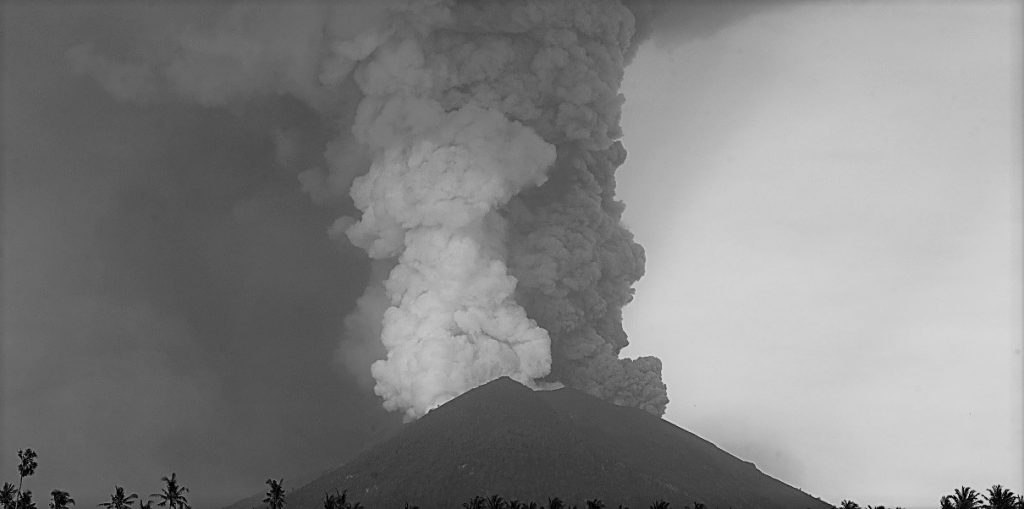Bali’s rumbling Mount Agung is starting to impact the economy of the holiday island and, if the eruptions and volcanic ash clouds persist, could spark a bigger wave of cancellations by visitors to Indonesia’s main tourism destination as peak season beckons.
The relatively small island has an outsized importance for Indonesian tourism. In January-September, Bali received 4.5 million foreign tourist arrivals, nearly half of the 10.5 million arrivals in Indonesia.
Foreign tourist arrivals to the majority-Hindu island rose 26 percent in the nine-month period on an annual basis, though dropped on a monthly basis in September, when Indonesian authorities first raised the warning alert on Agung.
“Bali is about tourism, nothing else. If it (the eruption) is prolonged for around 1-3 months, it will impact our tourism significantly,” said I Ketut Ardana, chairman of the Association of the Indonesian Tours and Travel Agencies (ASITA).
“We can feel a small impact now, the price of staple goods is increasing” he said.
Indonesia closed Bali’s airport on Tuesday for a second day, stranding thousands of visitors due to the ash cloud. On Monday alone, it disrupted 445 flights that would have carried 59,000 passengers.
Chinese tourists have overtaken Australians to become the top visitors to Bali, representing around a quarter of arrivals in January-September. Australian and Japanese tourists are the second- and third-largest groups.
Foreign tourists spent about $1,100 on average during Indonesia holidays in 2016, according to tourism ministry data.
President Joko Widodo has been trying to promote creation of 10 “new Balis” in other parts of the scenic Indonesian archipelago. But for many so far, holidaying in Indonesia means going to Bali.
ECONOMY STUCK IN SLOWER GEAR
As Agung spewed tall columns of ash, life continued largely as normal on Tuesday for villagers near the volcano who set up traditional markets and offered Hindu prayers.
Matthew Smyth from Ireland, a restaurant owner in Amed, around 15 km (9 miles) from the volcano, said many businesses using rented land would be threatened if the eruption dragged on. “Half of the businesses here are built on credit… if the situation continues many people will lose their land,” said Smyth, who is also setting up a yoga retreat and freediving centre.
The problems facing Bali tourism come as Indonesian policymakers have been trying to fire up an economy stuck at around 5 percent growth, held back by largely flat consumption.
Bali has been growing more quickly. The tourism sector was the biggest contributor to its 6.24 percent regional GDP growth last year.
But Agung has already put a dent in Bali’s growth this year.
“If it (the eruption) is prolonged to a month, especially in Bali, it could have an impact on tourism revenue. I think this is a short-term shock, but it needs to be watched,” said Myrdal Gunarto, an economist at Maybank Indonesia in Jakarta.
Wayan Wirjana, 31, the manager of a restaurant in Candi Dasa, a popular beach town in Bali, said he was only getting five visitors a day, down from 15-20 in the summer, and expects the usually busy Christmas and New Year period to be slow.
“If things continue in the long term, like through the Christmas period, we’ll have to lay off staff even if temporarily. We all have families so there is a very real impact on us,” he said.






